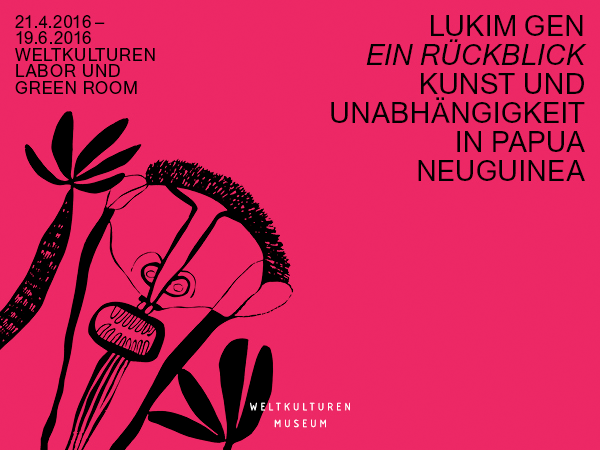 Timothy Akis, War Magic, 1975, Siebdruck auf Papier, Weltkulturen Museum
Timothy Akis, War Magic, 1975, Siebdruck auf Papier, Weltkulturen Museum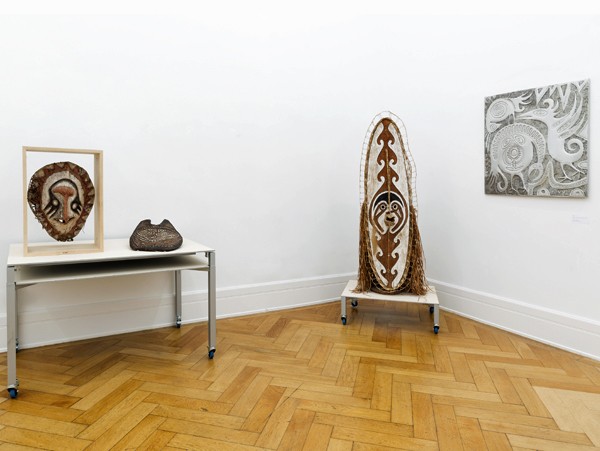 Exhibition view LUKIM GEN, Weltkulturen Museum 2016
Exhibition view LUKIM GEN, Weltkulturen Museum 2016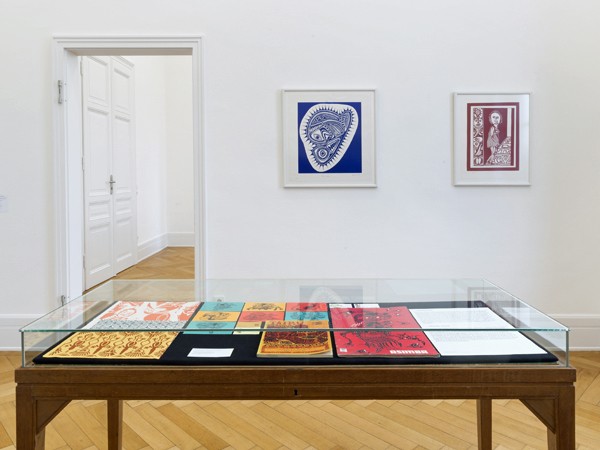 Exhibition view LUKIM GEN, Weltkulturen Museum 2016
Exhibition view LUKIM GEN, Weltkulturen Museum 2016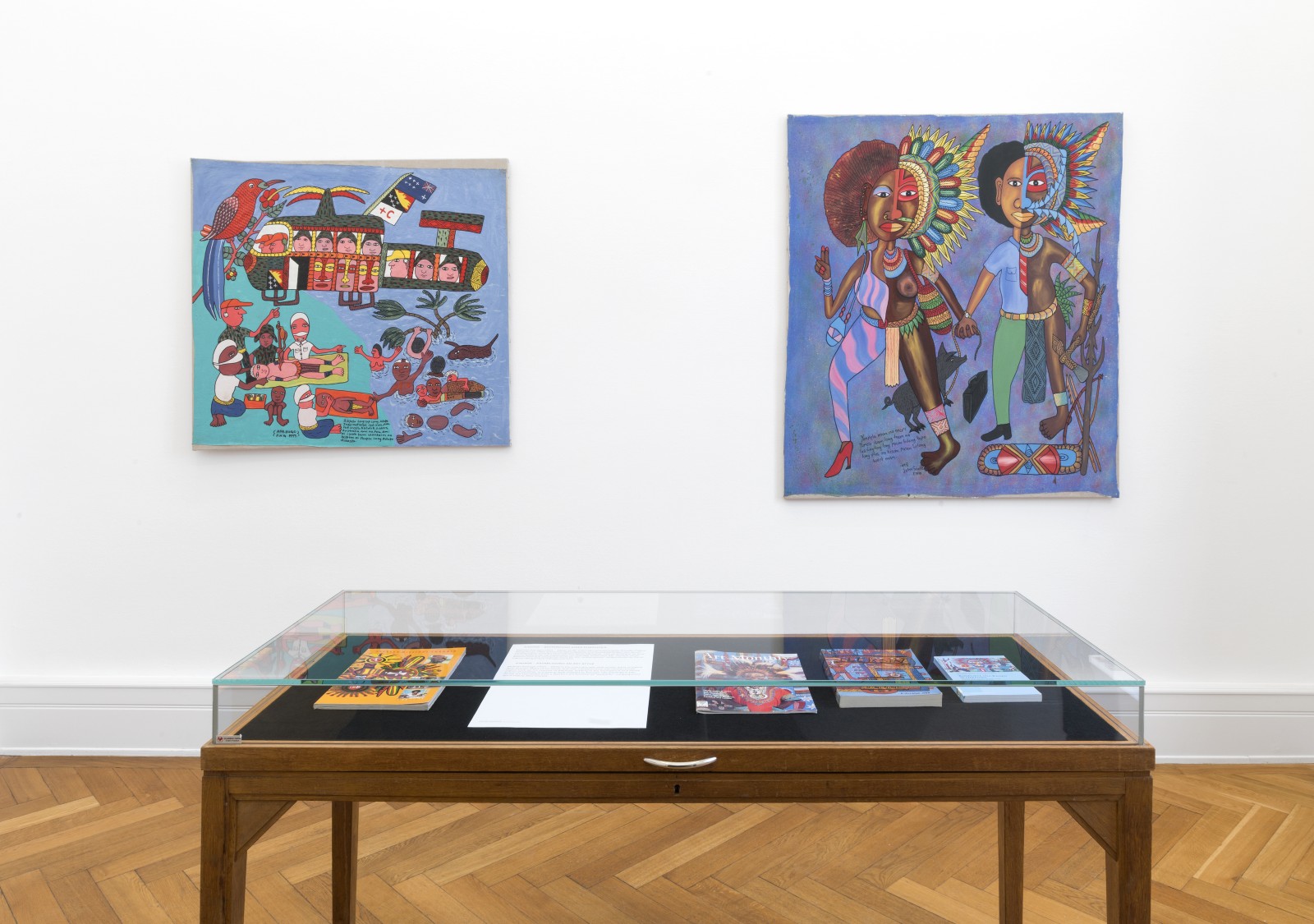 Exhibition view LUKIM GEN, Weltkulturen Museum 2016
Exhibition view LUKIM GEN, Weltkulturen Museum 2016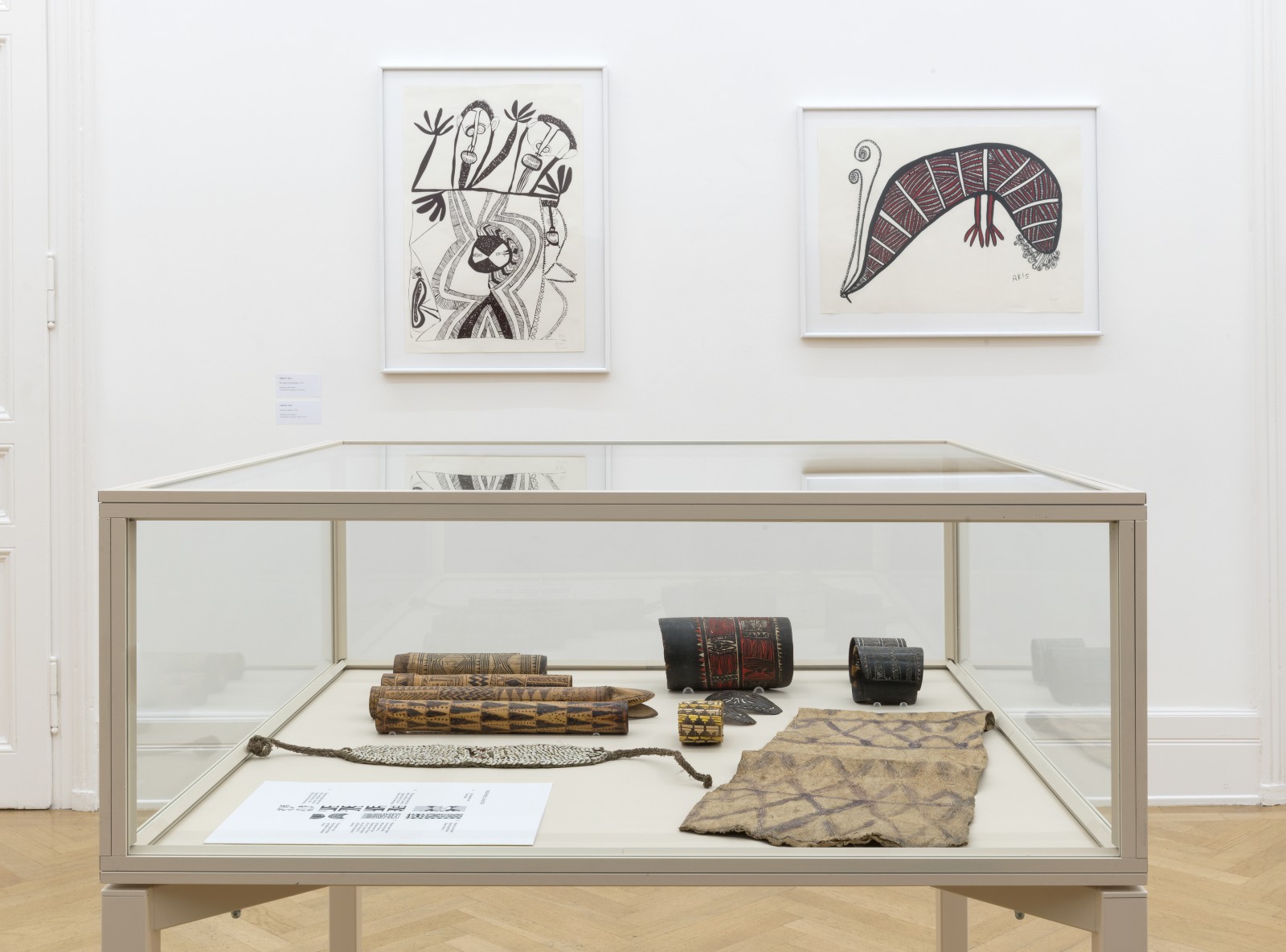 Exhibition view LUKIM GEN, Weltkulturen Museum 2016
Exhibition view LUKIM GEN, Weltkulturen Museum 2016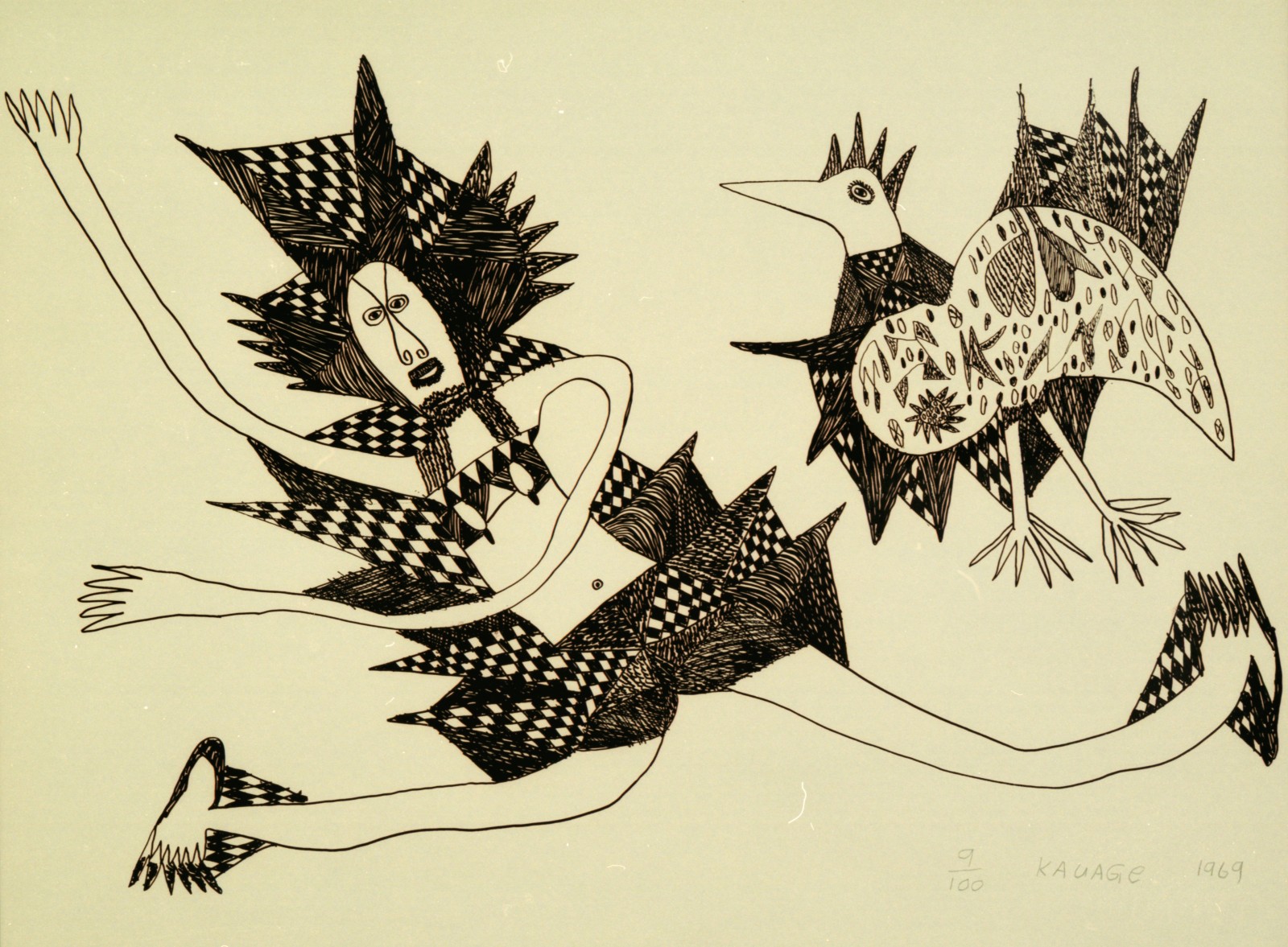 Mathias Kauauge, Frau mit Vogel, Photo: Stephan Beckers
Mathias Kauauge, Frau mit Vogel, Photo: Stephan Beckers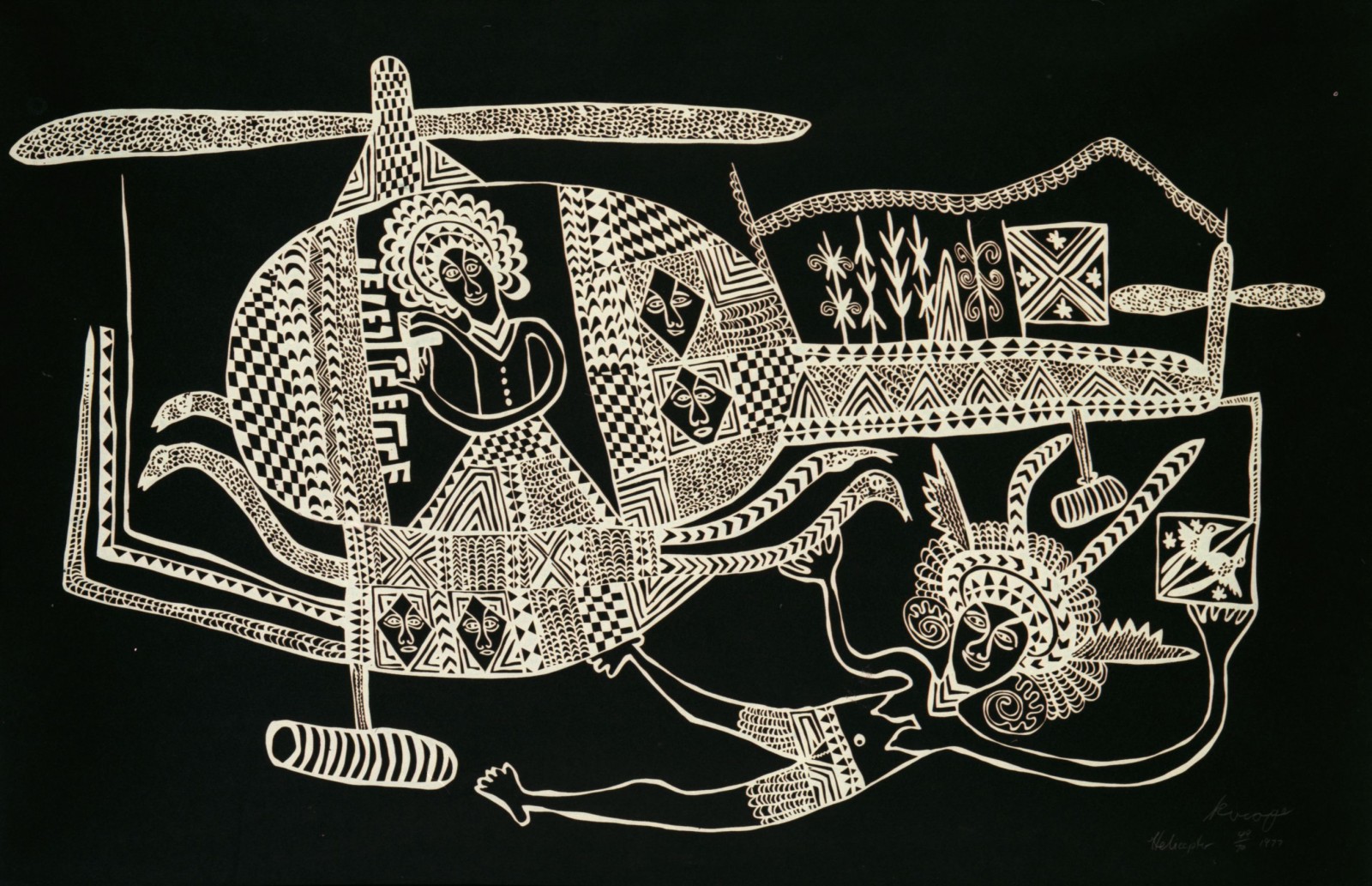 Mathias Kauauge, Helicopter, Photo: Stephan Beckers
Mathias Kauauge, Helicopter, Photo: Stephan Beckers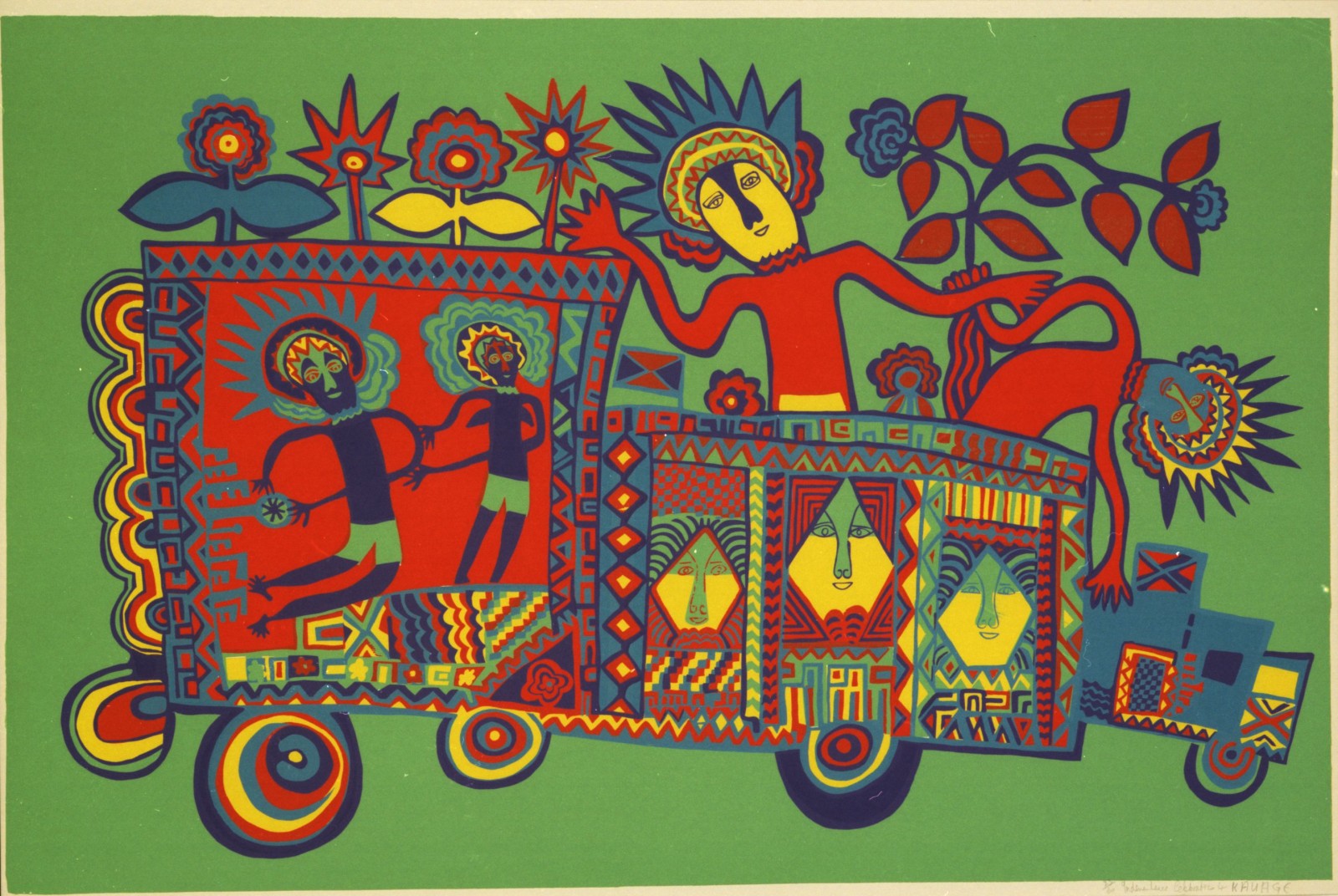 Mathias Kauauge, Independancy, Photo: Stephan Beckers
Mathias Kauauge, Independancy, Photo: Stephan Beckers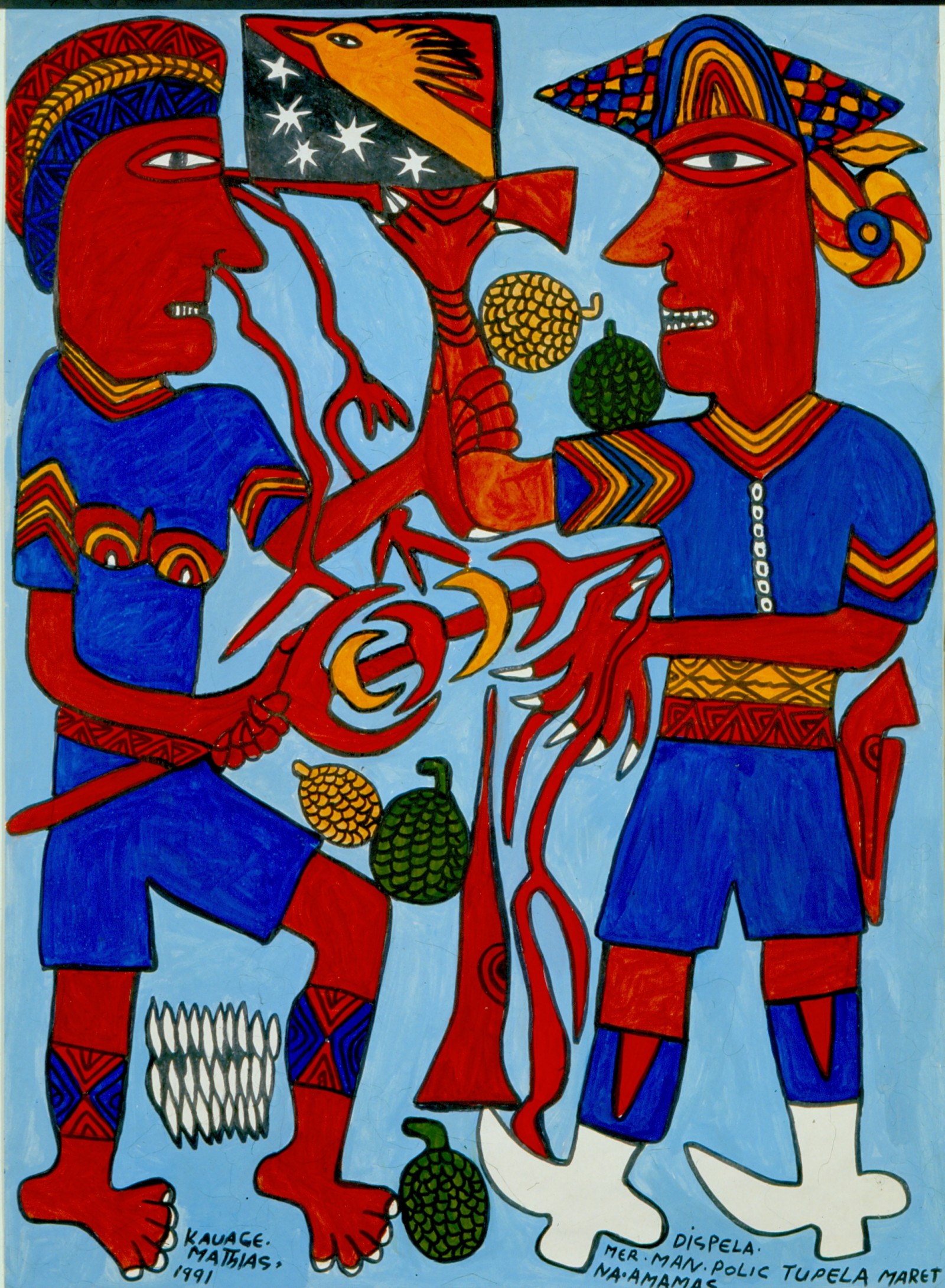 Mathias Kauauge, Polizei, Photo: Stephan Beckers
Mathias Kauauge, Polizei, Photo: Stephan Beckers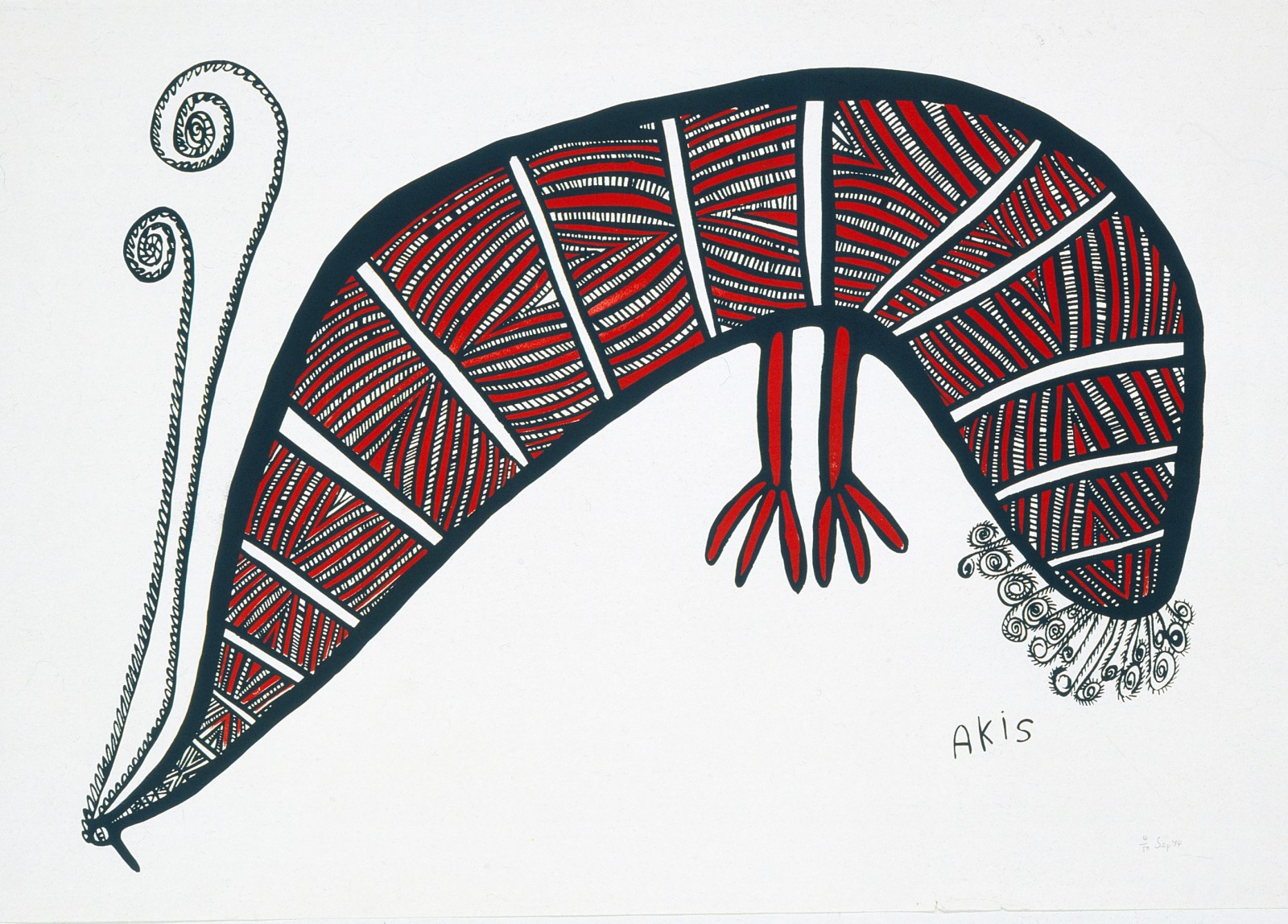 Timothy Akis, Kasuar, Photo: Stephan Beckers
Timothy Akis, Kasuar, Photo: Stephan Beckers
LUKIM GEN - A RETROSPECTIVE. Art and Independence in Papua New Guinea
In parallel to the exhibition A LABOUR OF LOVE, which showcases works by black South African artists from the 1980s, the Weltkulturen Museum is now looking retrospectively at a particular era in the art of Papua New Guinea. Just like the South African works in the main building, the prints, drawings and paintings on display in the Weltkulturen Labor also represent one of the key areas in the museum’s contemporary art collection.
While the South African artists had to struggle against apartheid and repression, the artists in Papua New Guinea in the 1960s and 1970s were driven by a particular mood of political optimism. As self-government became established in the country, a debate broke out over how to evolve an all-embracing cultural policy. In preparation for independence from Australia in 1975, attempts were made to define a national culture. With over one thousand local cultures in Papua New Guinea, the aim was to provide common points of identification for all cultural groups and yet, at the same time, leave enough space for each local culture to be cherished and maintained.
The patterns used in the country’s many different regions for painting and decorating bamboo containers, armbands, shields or masks provided an inspiration for graphic works that played a major role in shaping the image of modern art in Papua New Guinea.
At the Weltkulturen Labor visitors are invited to look for traces: In setting prints, drawings, and metal panels in relation to selected objects and artefacts from the museum’s New Guinea collection aesthetic correspondences become visible.
In the Green Room early prints are reminders of the emergence of the so called “outsider art” in the capital Port Moresby. They highlight an art style developed from traditional ornamentation which – also widely used in national book production – even today is generally regarded as a “typical” Papua New Guinea design.
The exhibition was curated by Dr. Eva Ch. Raabe (Curator Oceania and Acting Director, Weltkulturen Museum).
Weltkulturen Labor and Green Room, Schaumainkai 37
